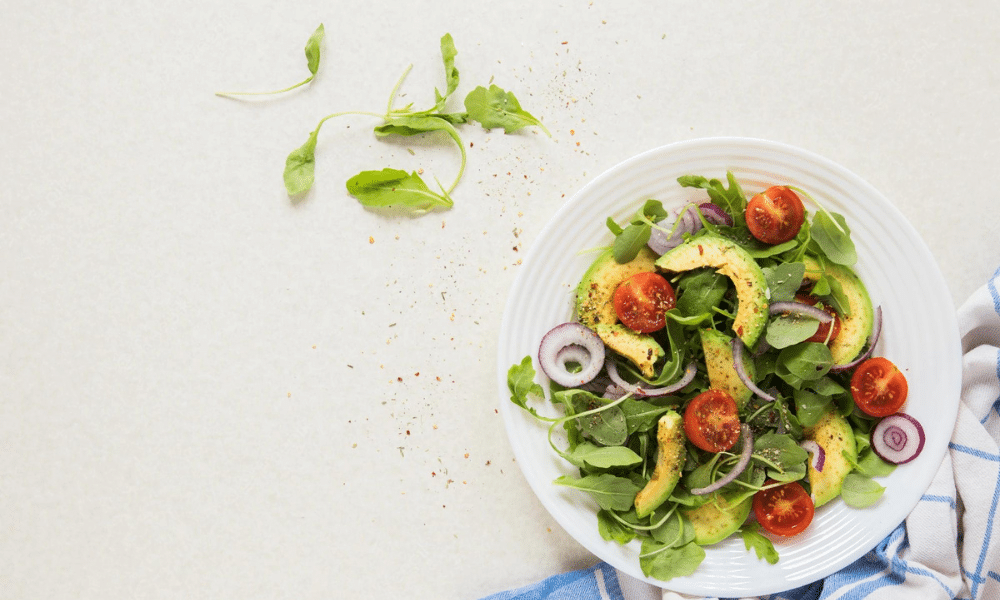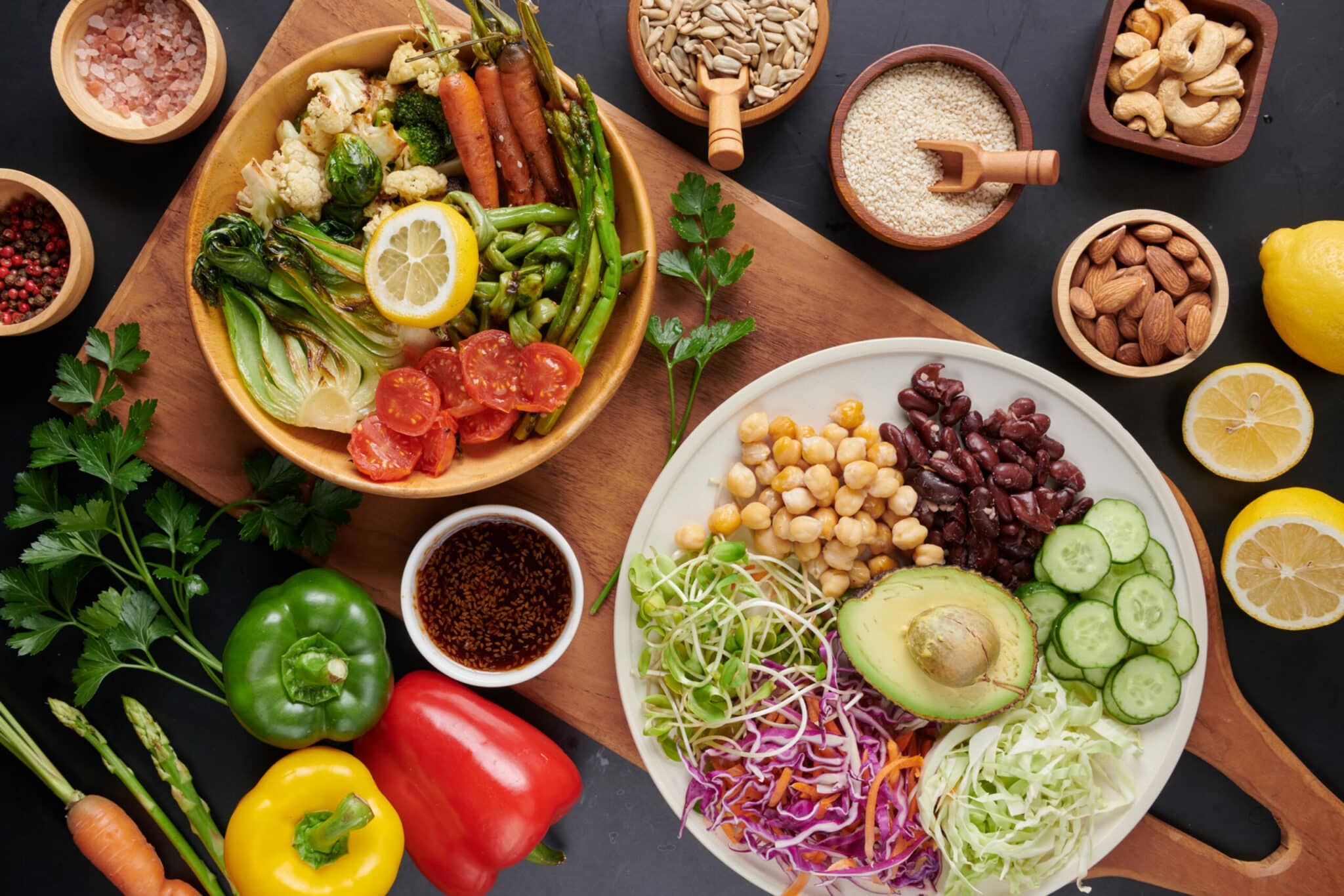Transitioning to a vegan diet is one of the healthiest things you can do for yourself and the environment, but is it as simple as everyone claims? Yes! I realize how difficult it may be to switch to a vegan diet after living a life as an omnivore. Every meal at my childhood home in South Carolina consisted of pork, poultry, eggs, dairy, or beef (if not more than one of those options). Yes, I understand. It’s sad to say, but it’s true.
Interest in becoming a vegan has reached a record high in the past year, thanks partly to the hype surrounding innovative plant-based products. But the vegan movement is much more than a fad; it’s a movement toward a more compassionate lifestyle for the planet and your health. So, what should you do to prepare for the transition? Read on for tips and information on making the transition to veganism.
What is veganism?
Veganism is more than simply a diet; it also covers things like not wearing leather and not visiting the zoo. When you first start dipping your toe into this area, it might all feel frightening and like a bottomless pit.
This is why we, along with many other experts, recommend that you begin by altering your diet. This has the greatest influence on animals and the environment (as well as your health!) because this industry is where most exploitation occurs.
It’s also the quickest method to make a difference… by altering what you buy at the store and what your cash votes for.
How to make the transition?
Self-education
It’s a good idea to educate yourself on why you’re considering a vegan diet before you can approach it with full confidence and the highest possibility of success. Don’t do it because it’s the latest craze; instead, discover the benefits of the lifestyle and how others have done it. Watch some of my favourite motivational films that demonstrate the advantages of a plant-based diet and the realities of what eating animals entail. To begin, Food Inc., Vegucated, Hungry for a Change, and Earthlings are among my favourite films. These will open your eyes, push you to change, and pique your interest in a vegan diet essential for success and a healthy lifestyle.
Don’t cut out, road out
The following step is one of the most crucial when learning how to shift to a vegan diet. Instead of cutting out, concentrate on crowding out. You’d probably feel frustrated and starved if I told you not to buy meat, eggs, or dairy at the grocery store. You’d have a far better notion of what to buy if I told you to buy quinoa, kale, spinach, sweet potatoes, bananas, tomatoes, mushrooms, flax, coconut milk, almonds, and berries instead.
It’s essential to replace animal products with various delicious, nourishing plant-based items when following a vegan diet. To begin, choose non-dairy milk, fruits, vegetables, whole grains, nuts, seeds, and legumes, and avoid vegan replacement meats if possible.
For ideas, look up recipes.
I used to think that if dinner didn’t include meat, I’d be stuck eating salad and steamed vegetables. Little did I realize how delicious and inventive vegan dinners might be! I searched for vegan meals online and quickly discovered inspiration and ingredient suggestions. This was crucial to my success and is one of the first things I recommend to others.
Visit a store.
Now it’s time to go to the market and stock up on all the vegan foods! Purchase healthful grains such as quinoa, wild rice, and oats and stock up on as much produce as possible. These are fantastic bases for breakfast dishes and hearty lunch or dinner. Consider replacing dairy milk with unsweetened almond milk and adding hemp, chia, walnuts, or flax seeds for healthy fats.
Lentils, green peas, chickpeas, and any other beans you wish to explore are also fantastic mainstays to have on hand to fill out your meals. To maintain optimal blood sugar levels, avoid foods with too much-added sugar (and overall health).
Enjoy yourself in the shop, but remember to read the ingredient labels and eat as many simple foods as possible. Finally, don’t overlook herbs, spices, and condiments such as stevia, tamari, mustard, tahini, and balsamic or apple cider vinegar. They’ll play an important role in making your dishes tasty, zesty, and sumptuous!
Concentrate on the fundamentals
It’s important to remember that following a vegan diet does not have to be difficult. When it comes to your first few batches of meals, stick to the basics. Breakfast options include porridge with almond milk, cinnamon, chopped fruit, and coconut yogurt. For lunch, I recommend making a few meals ahead of time and storing them in the fridge, such as soups and salads.
An ounce of raw almonds or walnuts, coupled with sliced fruits and vegetables, make a great snack. For dinner, a pan of roasted root vegetables with seasonings could be served with quinoa, mushrooms, garlic, and greens. Remember that the simplest things often taste the best, so don’t go overboard unless you want to. Create a smoothie to keep things interesting if you’re unsure what to do. They’re an excellent way to fill in the gaps and keep things interesting, not to mention tasty!
Take each day as it comes.
Remember not to overburden yourself when transitioning to a vegan diet by thinking that every meal must be complicated or prepared in a gourmet manner. Simply take each day, and even better, each meal, as it comes. Going vegan does not have to be stressful or intimidating; the less complicated your meals are, the better.
Most of the time, I eat whole foods.
It’s simple to go vegan and stock up on packaged vegan meals, but this isn’t the greatest way to go about it. Choose whole foods as much as possible instead of processed items, and keep your diet balanced by eating various vegan foods rather than just a few. This will ensure that you get the most nutrition from your meals and are more satisfied with them. Don’t worry; you can indulge in coconut ice cream or dark chocolate bars occasionally and without guilt — just not all the time.
Why is it beneficial to eat a plant-based diet?
“The only diet demonstrated to prevent—and reverse — advanced-stage cardiovascular disease and type 2 diabetes is a plant-based diet,” Hever explains.
According to research, plant-based eating has also been linked to long-term weight management, a lower mortality risk, and a lower risk of heart disease. According to Hever, it’s also associated with preventing and treating hypertension, excessive cholesterol, and a reduced risk of some malignancies.
“Adequately planned vegetarian, including vegan, diets are nutritious, nutritionally adequate…and appropriate for all stages of the life cycle, including pregnancy, lactation, infancy, youth, adolescence, older adulthood, and for athletes,” according to the Academy of Nutrition and Dietetics.
However, before joining the vegetarian bandwagon, remember that changing your diet takes a lot of willpower, preparation, and effort. It’s also never a good idea to go cold turkey.

In how Many ways veganism can be approached?
There is no one-size-fits-all approach to being vegan, and it’s just important that you get there.
Three traditional methods for converting to a vegan lifestyle are listed below. Choose the one that best fits your personality.
Immediately become a vegan.
I’m a vegan who went vegan in a matter of hours. It may sound tempting and admirable to some, but this is simply how I operate, and I’m a guy.
This may be the ideal strategy for you if you’re comfortable making significant adjustments in your life.
Your story shifts from being an omnivore to being a vegan. Boom!
Friends and family members are taken aback. You relish the rumours and questions about your ability to last. You do it because it’s what you do.
Veganism may not be for you if you’re not wired with the same “back against the wall” pride and tenacity as they are. This method comes with much pressure and expectations from yourself and others.
It’s also debatable if going vegan right away is healthy. Most of us are creatures of habit, and we consume the same foods regularly. So it’s only natural for your body to freak out when you suddenly start a new diet, as it tries to figure out what to do with these new nutrients.
This is, of course, if you’re like me and went vegan in addition to changing your dietary habits. This isn’t a big deal if you’re like my wife Maa, who was mostly vegetarian before going vegan.
Gradually transition to veganism.
The gradual approach to veganism may be more suited for you if you’re naturally patient and want to take the time to listen to your body.
This method entails gradually increasing the amount of plant-based meals in your diet while gradually decreasing the number of animal products in your life. It’s a fantastic method to make long-term changes to your taste buds, digestion, and buying habits.
However, this technique is a barrier to the discipline required to properly switch to a vegan diet while still hedging with animal products.
Would you be more liberal with yourself about your vegan commitments if you eventually became vegan? For example, you may pretend to be a vegan, but you will eat salmon at a restaurant on your wedding anniversary. Alternatively, you’re fine with eating backyard eggs or honey.
Again, these are your options, but you risk confusing non-vegans with the vegan message every time you give yourself wiggle room. They see that you claim to be a vegan, but your activities contradict this.
If you follow this strategy, you must set concrete milestones and goals for becoming vegan so that you don’t get caught in a transition phase. Although. The fact that you are willing to eat more plants benefits animals. So let us rejoice in any improvement! Just don’t get the message mixed up.
Take on a vegan challenge.
This is probably my favourite of the three approaches.
A vegan challenge is a period during which you attempt to live a vegan lifestyle. When people from all over the world try out veganism for a month in January, January may be familiar to you.
You can also participate in several free online challenges, such as this seven-day challenge.
You get the best of both worlds from the two prior ways by posing a challenge. You can swiftly switch, but you can also prepare around your challenge and what you’ll need to finish it.
You feel more focused and accomplished when you know you’ll be trying something for some time.
Then, at the end of your vegan challenge, you can decide whether you want to attempt it again for a longer period or if it was easier than you anticipated, and you’ll continue.
Conclusion
As you strive to overturn the comfortable cuisine you’ve been eating your entire life, switching to a plant-based diet might be new and difficult. We’ll show you how to go vegan the right way with a few strategies and recommendations, making your transition to veganism as painless as possible. Congratulations on making the decision to go vegan and starting your journey. This plant-based lifestyle offers numerous health, environmental, and animal welfare benefits.
It can be difficult for novices to transition to a plant-based diet. If you don’t know much about nutrition, you might be concerned about the numerous dietary choices you’ll have to make in the future. Studying more about plant-based cuisine and utilizing the approaches that best fit your lifestyle will make your vegan change easier.
